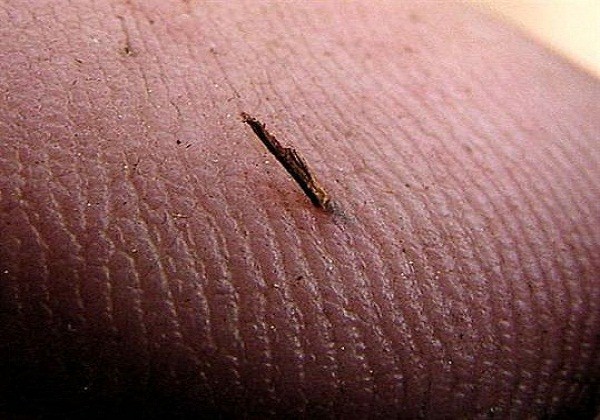In this article, we will discuss the best method to get a splinter out. They are usually small but can be a reason of huge pain. The bad thing about them is that they are difficult to remove. In case, a splinter is large and severe so you need to seek medical attention also. For small splinters causing pain and frustration, there are some different problem you can use to remove it.

Methods to Get a Splinter Out:
Method 1: Tweezers to Get a Splinter Out
- Before you begin removing a splinter your hands need to be cleaned with warm water and soap. By doing this you can eliminate the risk of spreading harmful bacteria that may cause an infection. You should wash hands with a mild soap and warm water for twenty seconds. Completely dry the area around the splinter before you try to remove it.
- Before using the tweezers, you should disinfect them with rubbing alcohol. This will reduce the risk of infection and also help to remove bacteria. Fill a bowl with rubbing alcohol and put tweezers within it and let them sit in a bowl for a few minutes. You can easily get rubbing alcohol from any drug store.
- Using a magnifying glass to get a splinter out is a great idea. This may help you see the splinter more clearly so you won’t have to worry about the risk of injuring your skin further. This will at least ensure that you get the splinter out in a well-lit area.
- If the splinter is hidden under a flap of skin then can use a sterilized needle to remove the skin and lift the flap. Then, use the sterilized needle to break and lift the skin flap. If the splinter is deep in the skin then consider going to your doctor to reduce the risk of injury.
- Once you have seen the exposed splinter’s tip, you need to grasp it near the surface of the skin with your tweezers. Finally, gently pull out the splinter from the skin.
Method 2: Glue to Get a Splinter Out
- You can easily get rid of a splinter using a glue such as white school glue. You just need to apply a layer of glue to the splinter and the surrounding area. The glue should be thick enough to fully cover the splinter. You should not use instant glue. This may not come off from the skin and trap the splinter instead of removing it.
- You can also try using a wax hair remover as it will also work the same way that you would use glue. You should wash hands with a mild soap and warm water for twenty seconds before you begin. Make sure the glue is completely dry before you can remove it. Leave the glue on the skin for about twenty minutes to one hour.
- Once the glue is dried, you just need to peel away the glue. Simply, grasp the edge of the glue and pull it in the direction so that the splinter can come out from the skin. You should pull slowly and evenly.
Method 3: Tape to Get a Splinter Out
- There are certain type splinters like fragile splinters from plants or fiberglass can be easily removed using tape. You are free to use different types of tape for this method including duct tape, masking tape, or electrical tape. You just need a small piece of tape. Wash the area around the splinter with mild soap and leave it to dry before you apply the tape.
- Apply the tape which you would like to use on the splinter region. Now, press it firmly so that the splinter get stuck to the tap. Be careful while pressing the splinter as you may end up getting the splinter deeper into your skin. The pressure should be applied away from the entry point of the splinter. Pull off the tape slowly, as you pull on the tape, the splinter will stick to the tape and come out.
Method 4: Caring for a Splinter Wound
- After removing the splinter it is necessary to take care of it. You need to gently squeeze it until you see some blood as this will remove some of the germs from the splinter out of your wound. You should not squeeze the wound hard if it doesn’t bleed with some gentle pressure. In this case, you need to clean away germs and bacteria with an antibacterial ointment.
- In case, the splinter continues to bleed by applying pressure or bleeding on its own then place a cotton ball to stop bleeding. This will prevent significant blood loss and shock. You do not need to worry the bleeding is normal and it will automatically get stopped. In the case of excessive bleeding, seek medical attention right away.















